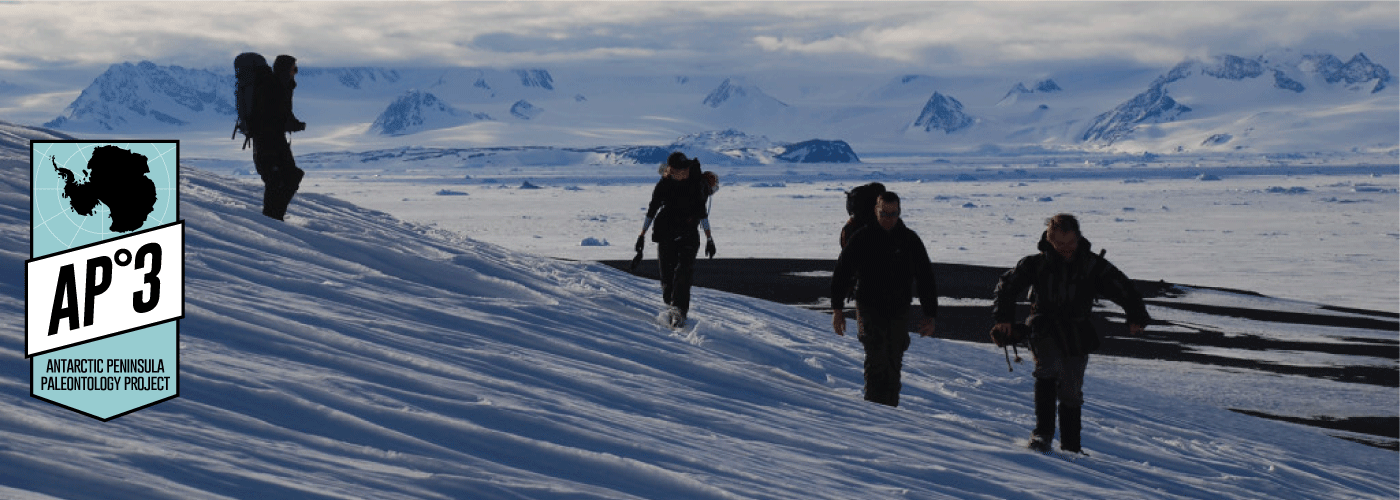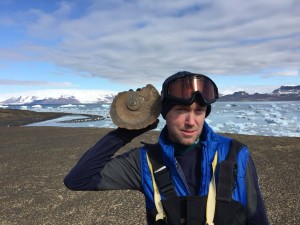Feb. 15–18 saw continued work on Sandwich Bluff and two helicopter-supported day trips to Seymour Island. Both of these areas produced an abundance of well-preserved Late Cretaceous and Eocene-aged fossils, including those of birds, plesiosaurs (long-necked marine reptiles; numerous isolated bones and at least one partial skeleton), bony fishes (including several skulls and partial skeletons), sharks, whales, unidentified vertebrates, and a variety of beautifully-preserved invertebrates (e.g., ammonites, nautiloids, gastropods, bivalves, crustaceans).
Geological investigations of the uppermost levels of the Sandwich Bluff Member of the López de Bertodano Formation on Vega Island were also initiated. The purpose of these studies is to test the hypothesis, advanced by our working group in a 2014 paper, that the uppermost levels of this Member are early Paleogene in age.
Reconnaissance teams also visited several additional localities, such as Blancmange Hill and The Naze of James Ross Island and the Devil Island area, the north coast, and False Island Point of Vega Island. Of particular note was the discovery of (seemingly) previously unrecognized exposures of the Upper Cretaceous Cape Lamb Member of the Snow Hill Island Formation north of False Island Point on the western shore of Pastorizo Bay. These deposits were intensively prospected on Feb. 19, yielding (among other specimens) a complete hexanchid shark (Notidanodon sp.) tooth, an unidentified vertebrate element that may be a lower jaw, and a wealth of extremely well-preserved invertebrate material. Additional reconnaissance of Blancmange Hill, northeastern James Ross Island, and southeastern Vega Island is scheduled for Feb. 20.


